Come for Art Basel, stay for New Art Dealers Alliance (NADA). With over 170 exhibitors at NADA alone and having already visited several fairs, I assumed the booths would start to blur. At NADA, that was far from what happened. The overall fair was refreshing and remarkable. There are several very small booths with just one or two walls, allowing exhibitors to show their artists without embarking on a major production. Whereas some dealers treat art fairs as a chance to clean out their consignment closets, NADA exhibitors took the opportunity to truly let their artists shine.
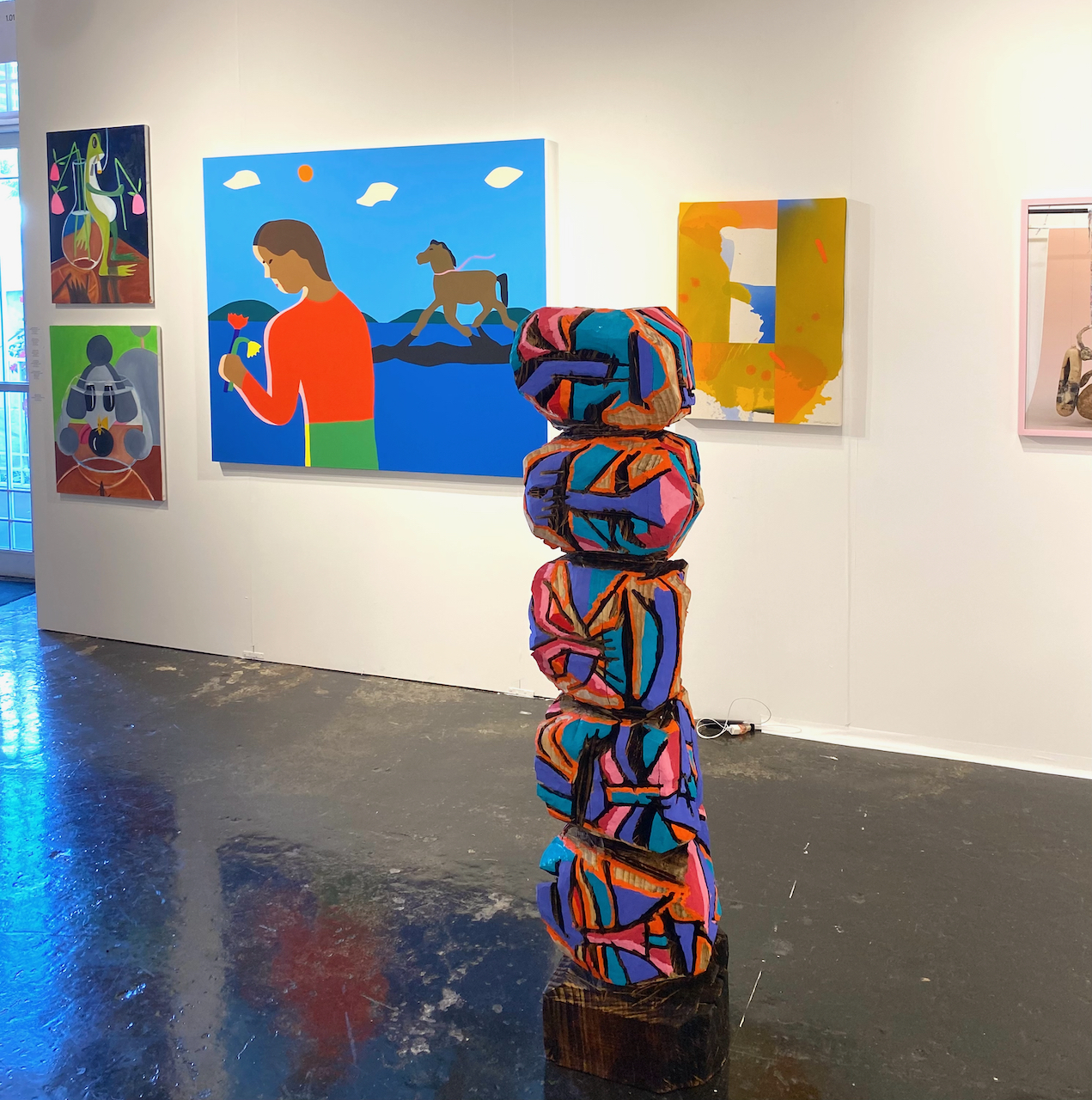
Ryan Schneider in The Pit’s booth at NADA; Photo by Annabel Keenan
Upon entering NADA, I was immediately greeted by the colorful booth of The Pit full of some of my personal favorite artists including Heather Day, David “Mr.StarCity” White, James Ulmer and Ryan Schneider. Joshua Tree-based Schneider is a painter and sculptor who has made a name for himself with his distinct abstract wood sculptures. Working the wood with chisels and chainsaws, the surface is rough and crude, with the overall result resembling a stack of masks or heads. Schneider paints the surface with rich, vivid colors, including the blue, red and pink seen in Side Eyes (2021) at NADA. There’s an obvious destructive, aggressive process involved in creating his sculptures, yet Schneider works with such precision and mastery of the material that overall composition feels both weighty and light, as if neatly, slowly sculpted with sensitivity and understanding of the natural material.

Anne Libby in Magenta Plain’s booth at NADA; Photo by Annabel Keenan
Nearby, New York’s Magenta Plains put together another standout selection of works by Anne Libby, Don Dudley and Liza Lacroix. Reinventing and abstracting everyday objects and symbols of urban infrastructure, Libby’s works included an homage to the utilitarian with a polished cast aluminum wall sculpture of window blinds. Her inventive interpretation of abstraction paired well with Dudley’s more formal investigations of space and form.
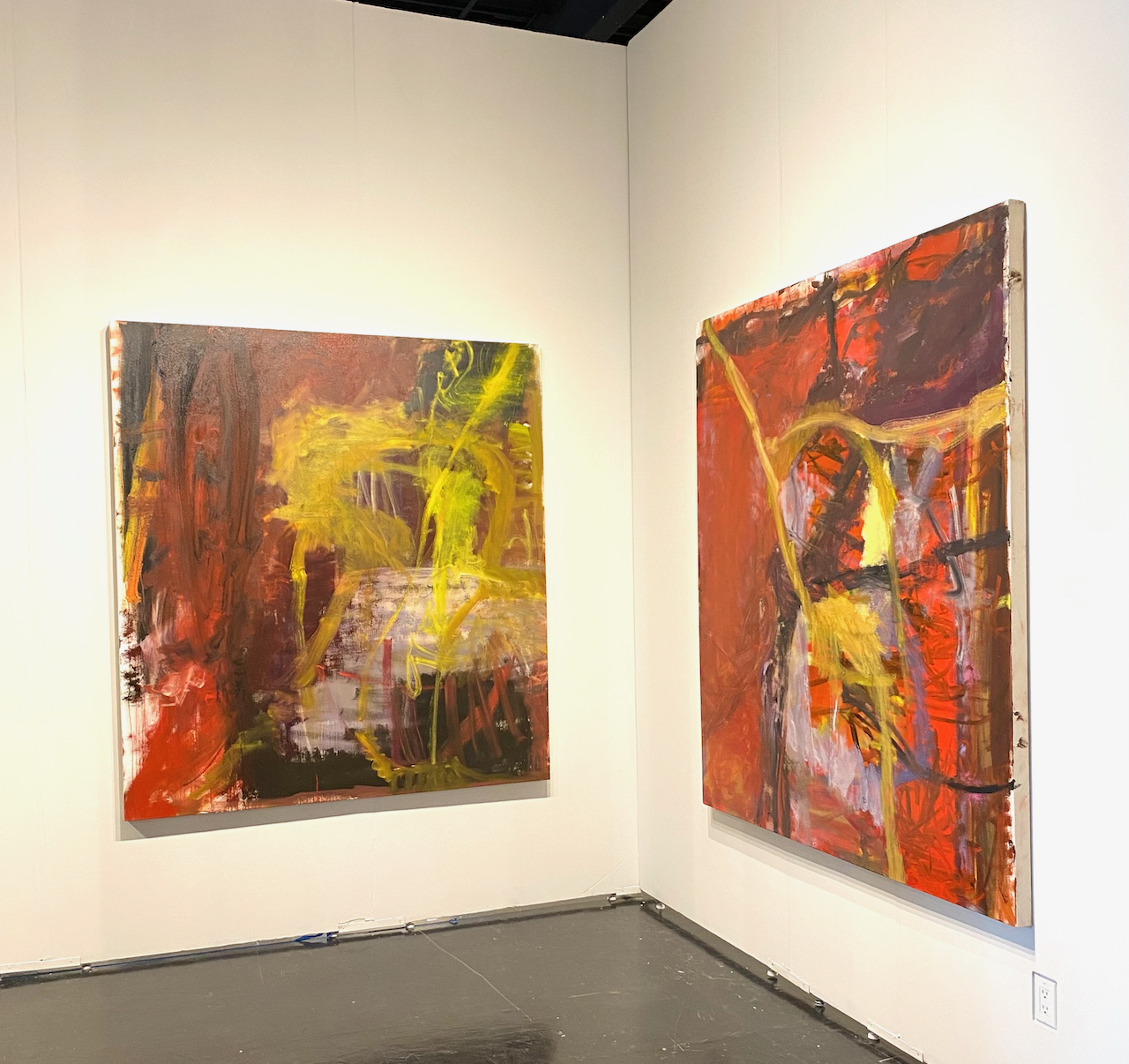
Liza Lacroix in Magenta Plain’s booth at NADA; Photo by Annabel Keenan
Libby and Dudley’s approaches to abstraction appear clean and crisp in comparison to Lacroix’s arresting oil paintings. Toeing the line between order and chaos, her paintings with layers of frenetic brushstrokes seem to both push the viewer away and pull them in at the same time. Her paintings are bold and weighty. The colors are dark, at times even muddy, and there is a confidence to the works that confronts the viewer as if they have disturbed the painting’s space.

Megan Dominesu in Anca Poterasu Gallery’s booth at NADA; Photo by Annabel Keenan
Another favorite was Bucharest-based Anca Poterasu Gallery’s solo booth of humorous textiles by Megan Dominescu. Visible from across the room, the wild, cartoonish scenes include crazed-looking figures with funny phrases like “Eat Prey Love” next to a vampire repeatedly biting a neck. My favorite was an anthropomorphized dog standing proudly in a red, white and blue outfit with a crown on its head. The background reads “She’s beauty she’s grace she’s Miss United States.” Much like David Shrigley, Dominescu brought a refreshing levity to the fair.
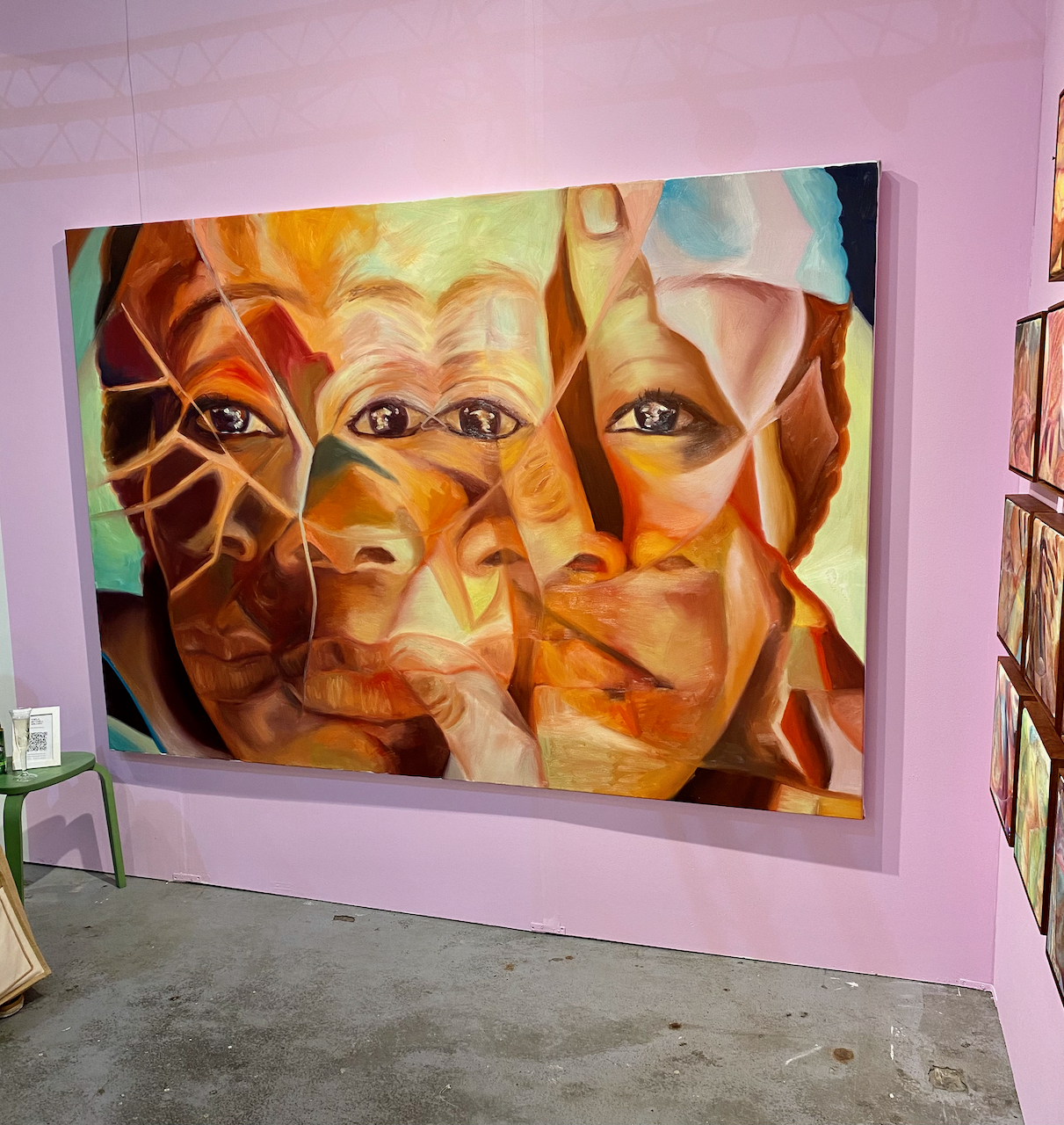
Célia Rakotondrainy in Chela Mitchell Gallery’s booth at NADA; Photo by Annabel Keenan
One of the most memorable booths was from Chela Mitchell Gallery, the first Black women-led gallery from Washington, DC to show at NADA. Chela Mitchell exhibited a solo presentation of extraordinary works by Célia Rakotondrainy. Born in Paris, Rakotondrainy explores her multicultural French and Malagasy heritage, in particular ideas of identity constructs and how society divides people into individual labels based on appearance. Using her art to explore these issues both collective and personal, Rakotondrainy paints kaleidoscopic portraits with fragmented and reassembled features that appear to be viewed from a broken mirror.

Jeffrey Deitch’s Shattered Glass curated by Melahn Frierson and AJ Girard; Photo by Annabel Keenan
After NADA, I stopped by Jeffrey Deitch’s sixth and final project at the Moore Building in the Design District. This year, Deitch expanded upon his highly acclaimed Shattered Glass show that debuted earlier this spring in LA. Both exhibitions were curated by Melahn Frierson and AJ Girard and featured works by emerging and mid-career artists of color. A sorely-needed counterpart to white male figures that dominate the narrative of art history, the show was packed with names that were new to me, as well as several that I am increasingly encountering in large part due to Frierson and Girard.
The artists in Shattered Glass are nearly all in their 20s and 30s, with a few exceptions, and there is a wide range of disciplines and mediums including photography, painting and sculpture. The materials are equally diverse, with artists incorporating industrial techniques like air brush, as well as unexpected everyday materials including glitter and synthetic hair. The result is a rich, diverse show that creates a space for underrepresented artists and connects with visitors who are not often given the opportunity to see themselves and their community in a gallery setting.
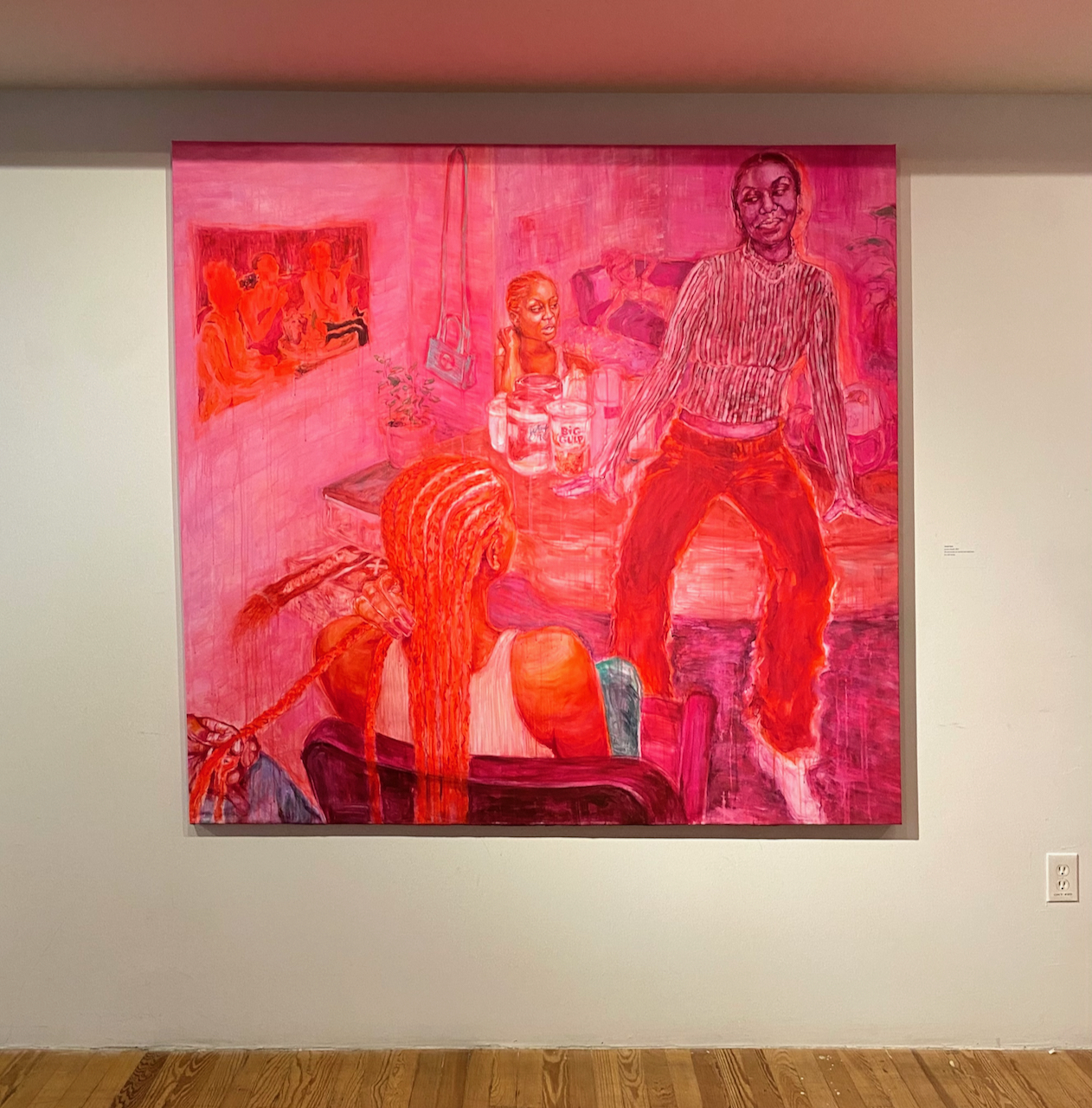
Jewel Ham, come correct (2021) in Shattered Glass; Photo by Annabel Keenan
Many works in the show feature the artists’s friends and families and scenes of everyday life. A personal favorite was Jewel Ham’s come correct (2021), a vibrant pink painting with a scene of women casually chatting in an intimate, candid moment. Ham is known for her paintings that blend elements of portraiture and still life, and she often paints in rich red, orange and pink hues. Her skill in capturing the emotions of her sitters comes through in this painting. The women appear to be in the middle of a joke as the figure sitting on the table casts a knowing glance at someone braiding hair just off the side of the scene.
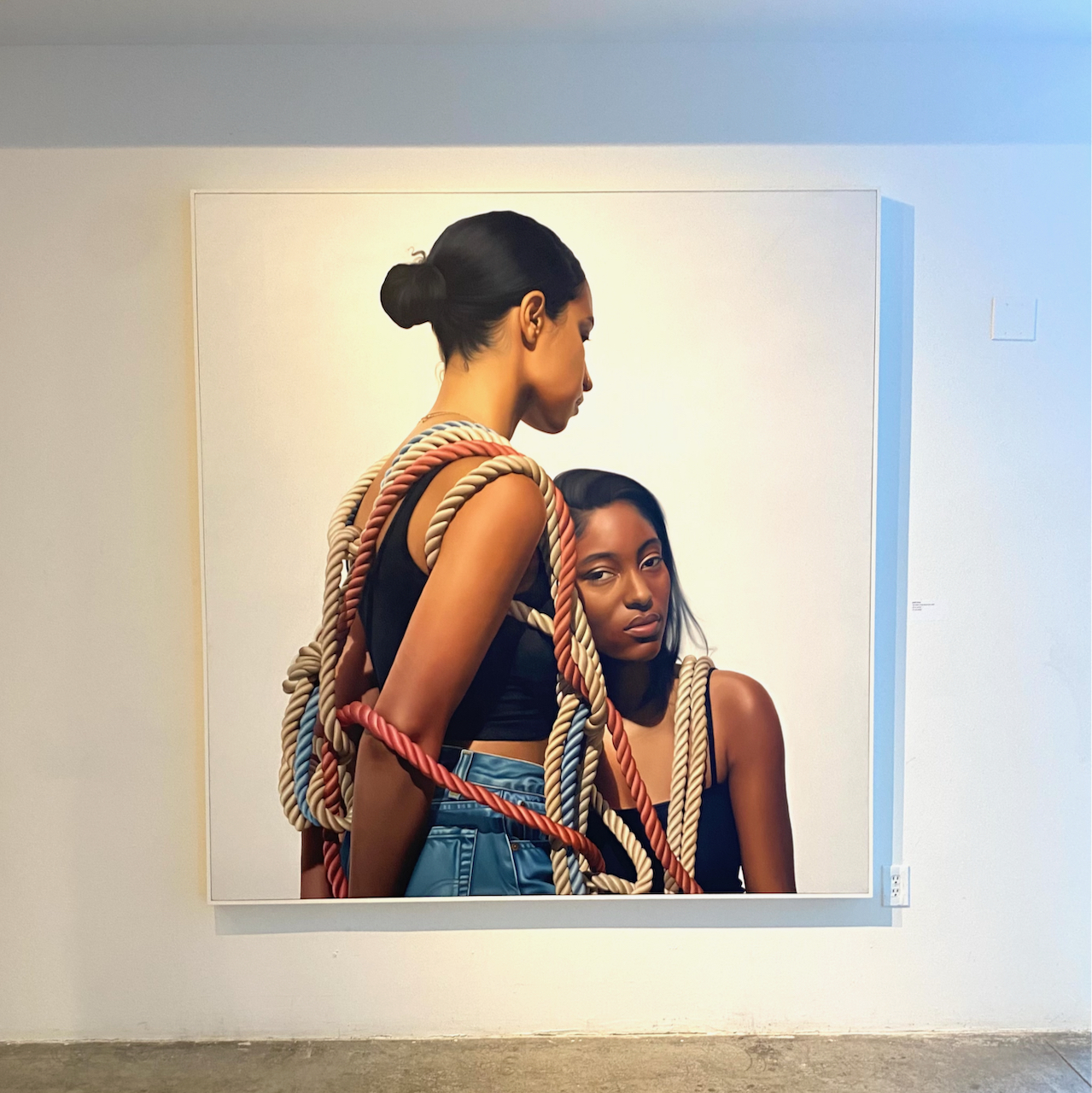
Delfin Finley’s Two Sides of the Same Coin (2021) in Shattered Glass; Photo by Annabel Keenan
Another favorite was Delfin Finley’s Two Sides of the Same Coin (2021), an incredibly skillful photorealistic painting of two women with ropes draped around their bodies. One woman faces the viewer with a downcast expression as the other looks down into the distance. Finley’s portraits address America’s social and political issues and often incorporate the artist’s own experiences with racial injustice.
Deitch’s show rounded out my fourth day of reporting for Artillery and left me with many, many inspiring artists to further explore. Today, I’ll wrap up my thoughts on Miami Art Week and reflect on some of the highlights of the fairs, in particular the emerging artists whose careers I’m excited to follow, as well as the yet to be discussed elephant in the room: NFTs.





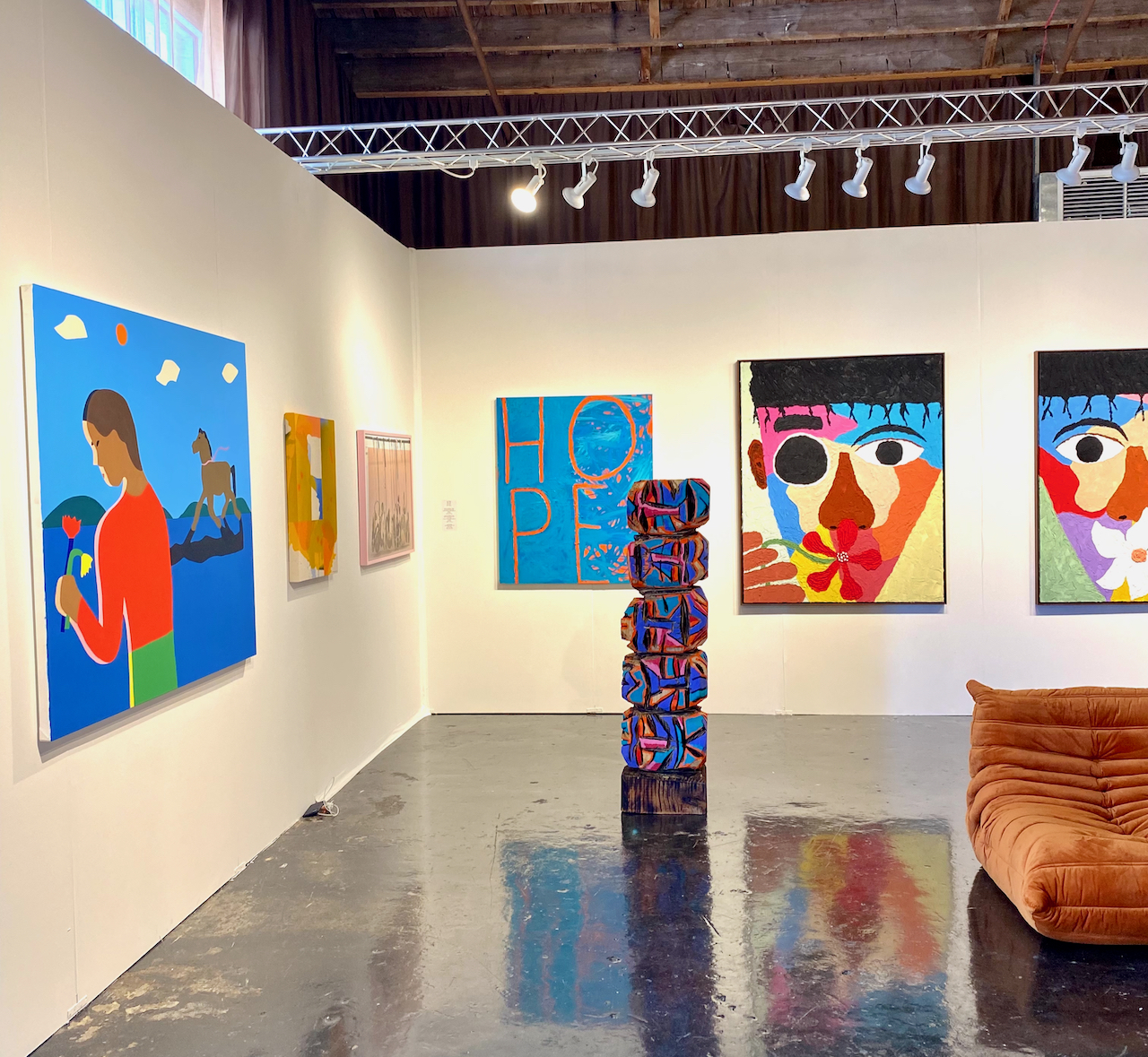













0 Comments